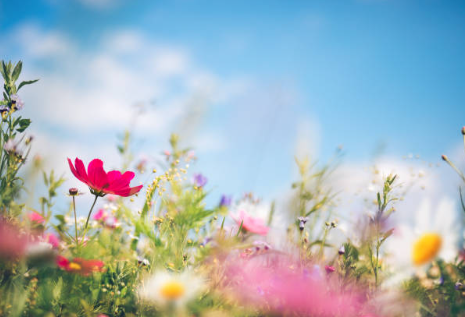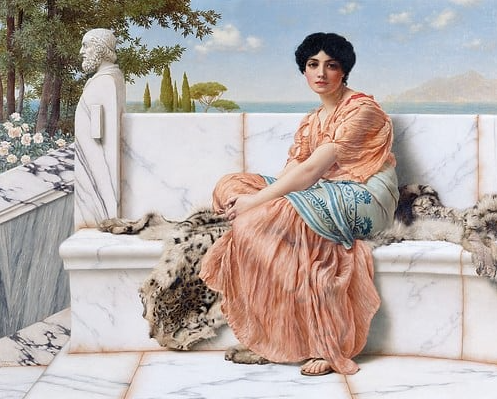
Language is a powerful tool that shapes our understanding of the world, including how we communicate our identities. Our words can evolve and gain significance as a tool to represent diverse identities. One word that may come up during Pride celebrations is “Sapphic.” This word may sound new, as Sapphic is not a commonly used term. However, don’t fret! The following explores the power and beauty behind this word by delving into the meaning of the word “Sapphic,’ its historical context, and its significance in contemporary society.
Current Definition
While the words “Sapphic” and “Lesbian” appear to mean the same thing, the two are distinct. The distinction between the two is Sapphic is an umbrella term for not only lesbians but also bisexual, pansexual, trans femmes, mascs, non-binary folks- and even cis women (Pająk, 2022; Hamou, 2022; Kennedy 2020). This is because “Sapphic” is a way to describe the intention of attraction through the female gaze (Hamou, 2022; Winch, 2007; Brousset, n.d.). In fact, Sapphic has been defined as an intention-the attraction of “the fullness of a potential lover’s humanity” (Hamou, 2022, para. 5). While Sapphic can identify lesbians, it is essential to note that not all people who use the term identify as a lesbian and vice versa. This is because the term encompasses a spectrum of gender identities and goes beyond sexual orientation to the experience of love, attraction, desire, romance, community, friendships, and other forms of platonic and romantic love (Hamou, 2022; Pająk, 2022; Kennedy 2020; Winch, 2007).
Origin and Historical Context

“Sapphic” traces back to ancient Greece, specifically the Island of Lesbos, where the poet Sappho lived during the 7th century BCE (All Poetry, n.d.). Sappho was renowned for her lyrical poetry, often expressing her love and desire for both men and women (All Poetry, n.d.; Menedelsohn, 2015; Hamou, 2022). Her poems were deeply personal and intimate, profoundly capturing the essence of love and passion (Menedelsohn, 2015). The Greeks considered her the female counterpart of Homer- as she was considered the “Tenth Muse” and referred to as the Poetess (All Poetry, n.d.; Menedelsohn, 2015).
Over time, Sappho’s work became synonymous with femme sexuality, and the term “Sapphic” emerged as an adjective to describe women who love women (Hamou, 2022; Pająk, 2022; Winch, 2007; Menedelsohn, 2015; Brousset, n.d.). While her exact sexual identity is still a controversy, Sappho’s reputation as a lesbian grew in the millennia after her death- with legends claiming the early church burned her works (All Poetry, n.d.; Menedelsohn, 2015). This reputation derived from a Greek drama in 320 BC that portrayed Sappho as overly promiscuous and as a lesbian (Briannica, n.d.). However, it is vital to note Sappho’s poetry also encompassed a broad spectrum of emotions and relationships, celebrating the complexities of human desire and connection (All Poetry, n.d.; Menedelsohn, 2015; Hamou, 2022; Winch, 2007).
Resurgence and Modern Usage
The term “Sapphic” experienced a resurgence during the feminist and LGBTQ+ liberation movement of the 20th century (Menedelsohn, 2015). The word was reclaimed as a source of pride and empowerment for women who love women, reflecting a sense of identity and solidarity (Hamou, 2022; Pająk, 2022; Kennedy 2020).
In contemporary usage, “Sapphic” refers to femmes attracted to other femmes whether they identify as lesbian, bisexual, queer, trans, masc, or any diverse identity falling within the spectrum of same-sex attractions (Hamou, 2022; Kennedy 2020). The term acknowledges and affirms the unique experiences and relationships of female-identifying genders who love femmes and navigate their romantic and platonic love within the context of their personal lives and society (Brousset, n.d.; Hamou, 2022).
In addition to its use as sexual orientation, “Sapphic” has also become an aesthetic term, referring to art, literature, or cultural expressions that evoke the spirit of Sappho’s poetry (Brousset, n.d.; Hamou, 2022; Kennedy 2020). The Sapphic aesthetic celebrates the lens through which we view women; the beauty and strength of women, femmes, and non-binary people; the bonds they form with one another; and the resilience of their love (Brousset, n.d.; Hamou, 2022; Winch, 2007).
The Sapphic aesthetic emphasizes sensuality, intimacy, and exploring female desire and connections. It can be found in various art forms, including literature, visual arts, and music (Brousset, n.d.; Hamou, 2022; Kennedy 2020). By embracing the Sapphic aesthetic, artists seek to create space where the femmes who love femmes can feel seen, heard, and validated.
Embracing Diversity and Intersectionality

It is crucial to recognize that the experiences of Sapphic individuals are diverse and intersectional. Sapphic identities intersect with various aspects of a person’s identity, such as race, ethnicity, class, and ability. These intersections shape the lived experiences of Sapphic individuals and influence the challenges they face and the communities they navigate navigate (Thomas, 2022; Brousset, 2022; Kennedy 2020).
Conclusion
The word “Sapphic” carries a rich historical legacy that speaks to the beauty and strength of women who love women (Hamou, 2022; Winch, 2007; Pająk, 2022; Kennedy 2020). It represents an identity, an aesthetic, and a celebration of diverse experiences and connections (Thomas, 2022; Brousset, 2022; Kennedy 2020). By understanding the meaning of “Sapphic” and embracing its significance, we can contribute to a more inclusive and accepting society that recognizes and affirms the rights and experiences of all individuals, regardless of sexual orientation or gender expression.
Check out these “Sapphic” works at RPL!
Fried Green Tomatoes at the Whistle Stop Cafe by Fannie Flagg
The Seven Husbands of Evelyn Hugo : A Novel by Taylor Jenkins Reid
Last Night at the Telegraph Club by Malinda Lo
She Gets the Girl by Rachael Lippincott
Hani and Ishu’s Guide to Fake Dating by Adiba Jaigirdar
You Should see me in a Crown by Leah Johnson
The Lesbiana’s Guide to Catholic School by Sonora Reyes
Open me Carefully : Emily Dickinson’s Intimate Letters to Susan Huntington Dickinson
Hijab Butch Blues: A Memoir by Lamya H
The Selected Works of Audre Lorde
Works Cited
All Poetry. (n.d.). Sappho. Retrieved June 21, 2023, form https://allpoetry.com/Sappho
Britannica. (n.d.). New comedy. Retrieved June 21, 2023, from https://www.britannica.com/art/New-Comedy
Brousset, S. (n.d.). Sylvan sapphics: An exploration into Sapphism and Cottagecore. University of Pittsburgh. Retrieved June 21, 2023, from http://www.forbes5.pitt.edu/article/sylvan-sapphics-exploration-sapphism-and-cottagecore
Dilts, R., R. (2021). Constellations of Sappho: Tests, translations, and sexuality (28543419) [Doctoral dissertation, University of California Santa Cruz]. Proquest Dissertations and Thesis.
Hamou, Y. (2022, April 27). What does it mean to be Sapphic? Them. https://www.them.us/story/what-does-sapphic-mean
Kennedy, A., K. (2020). “More forms and stranger”: Queer feminism and the aesthetic of Sapphic camp (27964101) [Masters dissertation, Wake Forest University]. Proquest Dissertations and Thesis.
Mendelsohn, D. (2015, March 9). Girl, interrupted: Who was Sappho? The New Yorker. https://www.newyorker.com/magazine/2015/03/16/girl-interrupted
Pająk, P. (2022). 1933: the year of lesbian modernism in Poland? Women’s History Review, 31(1), 28-50. https://doi.org/10.1080/09612025.2021.1954333
Thomas, M. (2022). Audre Lorde: Unpacking intersectionality and oppression in feminism. Loyola University, Chicago. https://ecommons.luc.edu/cgi/viewcontent.cgi?article=1770&context=ures
Winch, A. (2007). ‘in plain English, stark naked’: Orlando, Lady Mary Wortley Montagu and reclaiming Sapphic connections. Critical Survey, 19(1), 51-61. Doi: 10.3167/cs.2007.190106.
